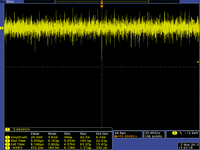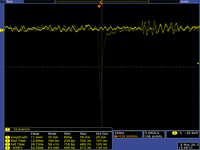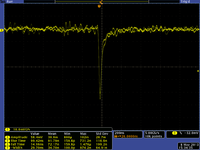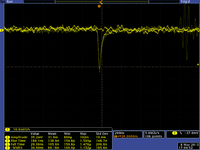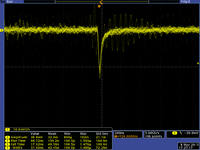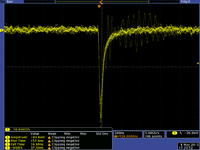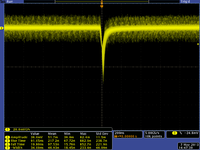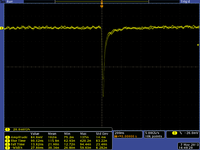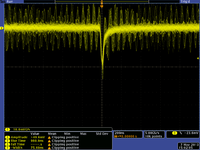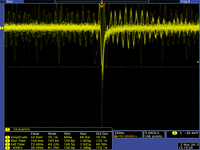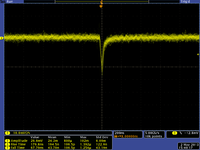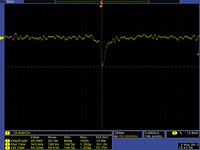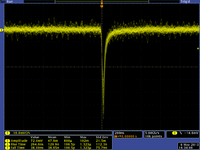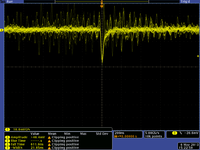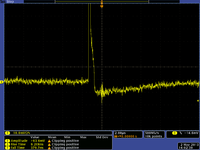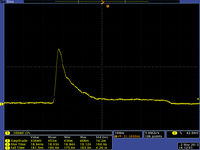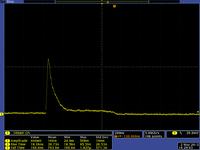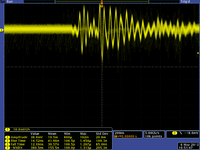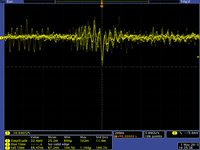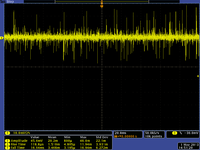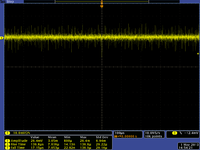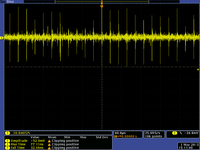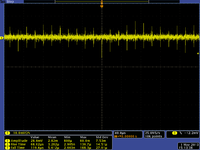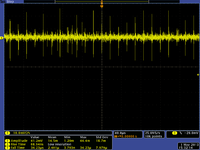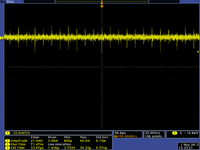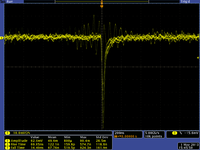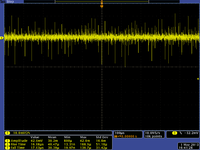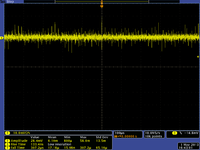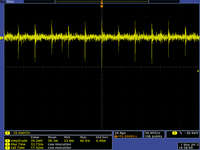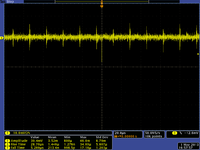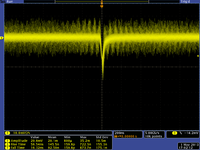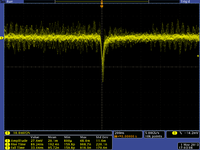Difference between revisions of "R1 S6 SignalSearchLog"
Jump to navigation
Jump to search
| Line 79: | Line 79: | ||
[[File:U15_SV_1289_Big_Positive_Spark.png|200px]][[File:U21_SV_1310_Big_Positive_Spark.png|200px]][[File:U28_SV_1310_Big_Positive_Spark.png|200px]] | [[File:U15_SV_1289_Big_Positive_Spark.png|200px]][[File:U21_SV_1310_Big_Positive_Spark.png|200px]][[File:U28_SV_1310_Big_Positive_Spark.png|200px]] | ||
|- | |- | ||
| − | | || || U61 || ||Hot and Noisy. | + | | || || U61 || ||Hot and Noisy. The Cause of the noise is the amplifier used. It turns out that this device is very sensitive to the vibration and movement. |
[[File:U61_SV_1350_HOT_Noise.png|200px]] | [[File:U61_SV_1350_HOT_Noise.png|200px]] | ||
|} | |} | ||
Revision as of 20:49, 15 May 2013
Testing procedure
Things that may cause "noise" that are actually due to your testing setup:
- STB boards not securely attached to chamber. Make sure center screws (ones attaching directly to the chamber, not the nylon stand-offs) are tightened to 14 in. lb's.
- Scope's termination set to 1Mohm. Set the scope to 50ohm termination.
- Lower bandwidth of 1 Ghz scope to 200 Mhz. This attenuates peak height, but also rejects high frequency noise and reduces the noise level from 55-65 mV to ~11-15 mV.
Super Layer 1
STB-1 G1202220
| Layer | Wire | Channel | Date | Comments |
| U1 | This channel presents higher noise level than the other ones, which makes difficult to get a signal with amplitude below 30mV. This behaviour extends to all the first channels of each connector in the board. however, if a high enough trigger level is set in the scope(~40mV), it is always possible to get a signal in these channels. | |||
| U24 | Warm Wire: This is a channel that always triggers a fake signal. | |||
| U38 | Warm Wire. | |||
| U66 | HOT Wire: This is a channel that always triggers a fake signal very often. | |||
| U87 | HOT Wire. | |||
| U93 | HOT Wire. |
The rest of channels not mention here has a similar behaviour between them, with a noise level not greater than ~20mV.
STB-2 G1202266
| Layer | Wire | Channel | Date | comments |
| U38 | Hot wire. | |||
| U40 | Warm wire. | |||
| U51 | Hot wire. | |||
| U65 | Hot wire. |
STB-3 G1202273
| Layer | Wire | Channel | Date | comments |
| U1 | Hot wire. | |||
| U2 | Hot wire. | |||
| U39 | Hot wire. | |||
| U78 | Hot wire. |
STB-4 G1202275
| Layer | Wire | Channel | Date | comments |
| U15,U21,U28 | This Board presents a unusual noise in all the channels. The noise is a big positive spark, which makes difficult the recolection of signals. However, It was possible by setting a higher trigger level in the scope. | |||
| U61 | Hot and Noisy. The Cause of the noise is the amplifier used. It turns out that this device is very sensitive to the vibration and movement. |
STB-5 G1202271
| Layer | Wire | Channel | Date | comments |
| U08 | Hot and Noisy. | |||
| U17 | Noise. | |||
| U18 | Noise. | |||
| U33 | Noise. | |||
| U34 | Noise. | |||
| U49 | Noise. | |||
| U50 | Noise. | |||
| U60 | Hot. | |||
| U65 | Noise. | |||
| U66 | Noise. | |||
| U81 | Noise. | |||
| U82 | Noise. | |||
| U88 | Hot. | |||
| U89 | Hot. |
STB-6
| Layer | Wire | Date | comments |
STB-7
| Layer | Wire | Date | comments |
Super Layer 2
STB-1
| Layer | Wire | Date | comments |
STB-2
| Layer | Wire | Date | comments |
STB-3
| Layer | Wire | Date | comments |
STB-4
| Layer | Wire | Date | comments |
STB-5
| Layer | Wire | Date | comments |
STB-6
| Layer | Wire | Date | comments |
STB-7
| Layer | Wire | Date | comments |
